Data-driven videos are incredibly popular due to their outstanding effectiveness. In fact, personalized videos are 116% more effective than generic videos (Pirsonal).
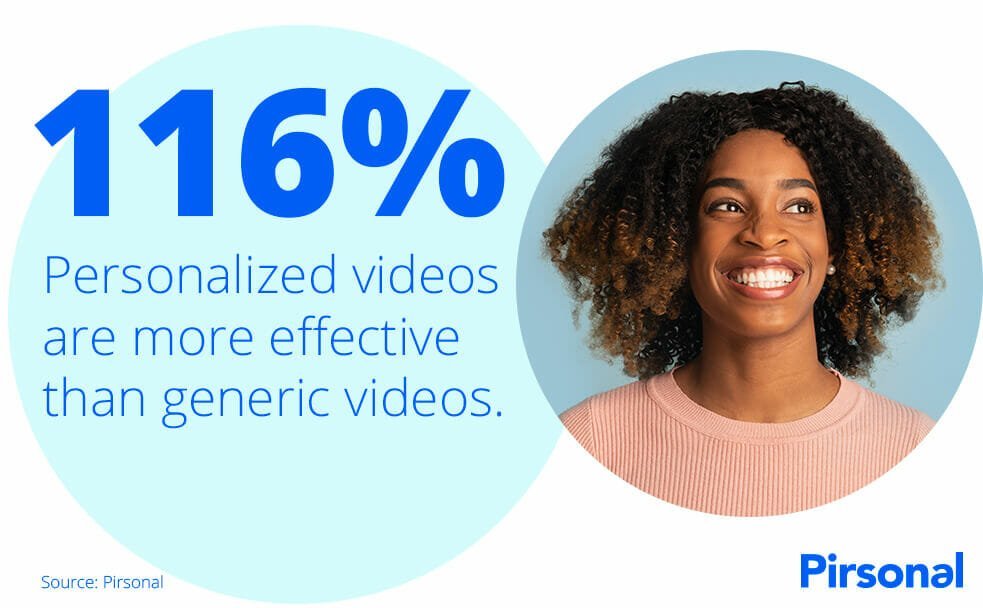
Personalized videos perform better than generic videos in 1:1 marketing
But creating personalized videos for customers is not a guarantee of success.
This is why I have created a personalized video framework to help you truly captivate viewers and compel them to take action.
Your marketing team or agency must consider three essential factors from this framework when creating this type of video.
These factors include a deep understanding of the three types of audience segments that most companies have, strategically incorporating dynamic content in all three sections of the video, and selecting a compelling storytelling framework that engages viewers from start to finish.
Today’s video personalization framework will impact the script, storyboard, dynamic video creative content, and interactive calls-to-action you use in the videos to engage with viewers.
Crafting the right aspects of a video helps make personalized videos more engaging and effective at prompting viewers to take action.
This article will teach you a powerful technique for video personalization, enabling you to create tailored videos for customers that perfectly align with your audience, objectives, and key performance indicators (KPIs).
Personalized Video Framework: 3 Factors that Determine Success
Before you even think about the content of the personalized videos, make sure to follow the tips I share in this video:
With those recommendations in mind, let’s continue with the next step, which is the content of the personalized videos.
I created the following video to fully explain this framework and strategy. Watch it now to learn the personalized video marketing strategy I follow to craft the perfect data-driven videos.
As you can see, the two primary objectives of effective personalized videos are to captivate viewers by conveying information within their context and to inspire them to take decisive action.
However, if the information and video content is not strategically presented, the videos won’t be as effective as expected.
To effectively enhance video engagement and prompt viewers to take action, it is crucial to consider three key factors when creating personalized videos for customers.
This infographic shows the personalized video framework with the three factors that affect how effective personalized videos are.:
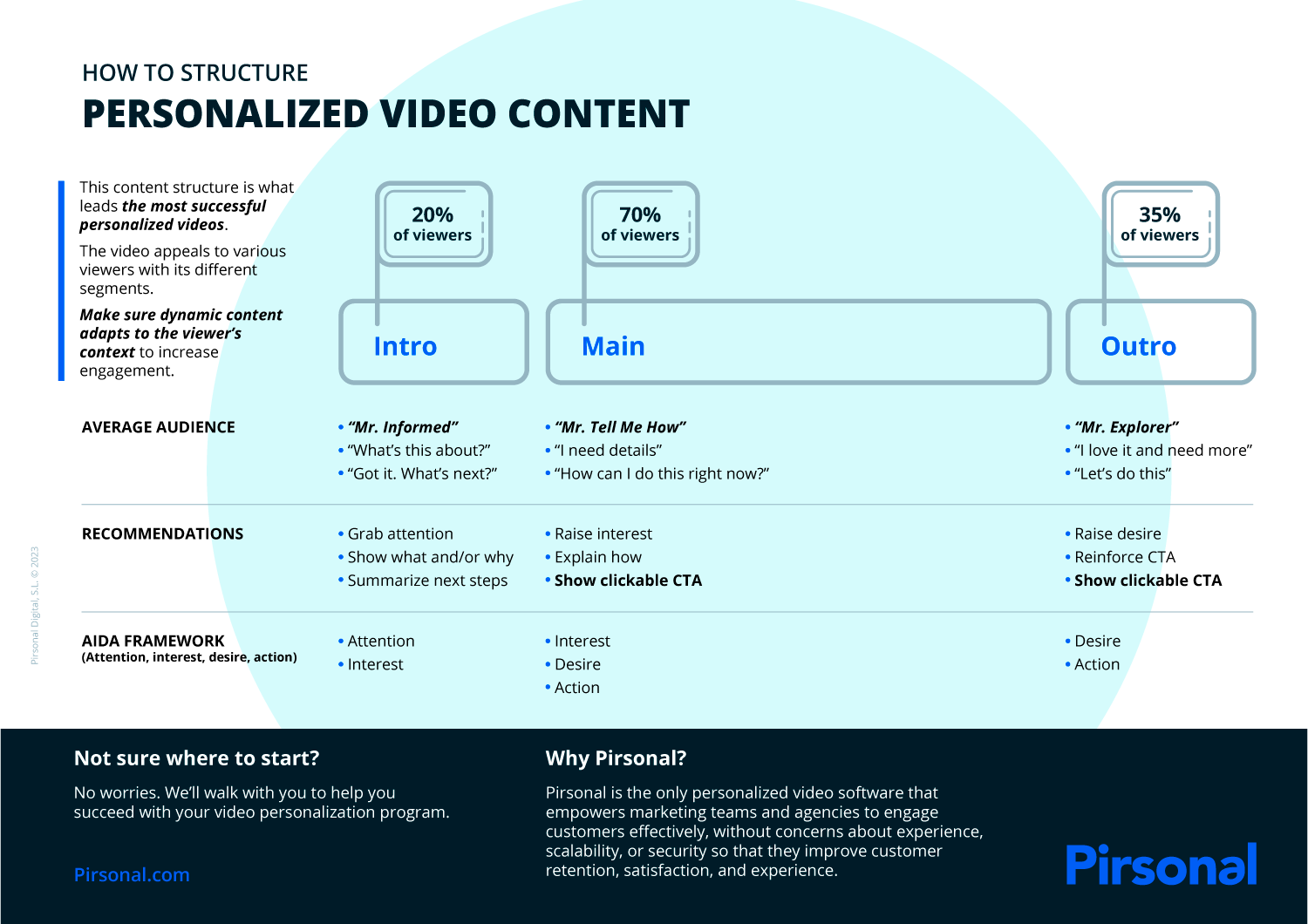
Pirsonal’s Personalized Video Content Framework
As you can see, there are three areas:
- Sections of data-driven videos
- Average audience per section
- Script, copywriting framework
And all of them are connected.
Let’s see how.
Sections of data-driven videos
With personalized video software like Pirsonal, personalized videos are highly effective because you can automatically tailor the content of the videos specifically to each customer’s needs.
This content can be personalized text, images, audio (soundtrack, voice-over), video clips, and the properties of this content.
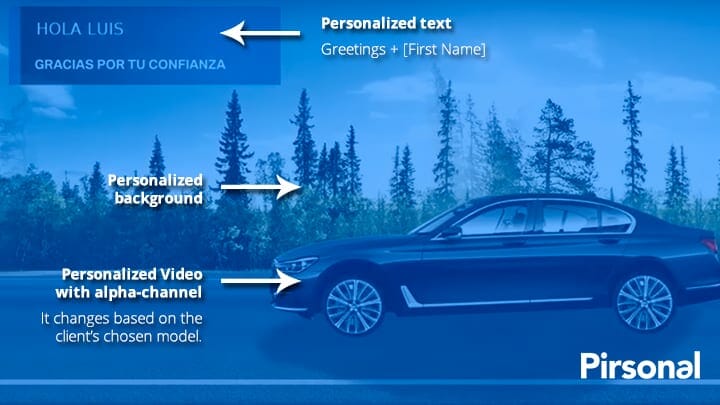
However, if every section of the video is not relevant to the viewers, even personalization won’t make it effective.
To increase viewer engagement with personalized videos, it is important to remember that every video shares a story and that engaging stories follow the same structure.
These are the sections of data-driven videos:
- Introduction
- Main
- Outro
Yet, it is important to point something out.
Different to a book, a song or even long-form video content like a movie, I’ve found that it is way more effective if every section of personalized videos addresses a different type of audience segment.
I’ll talk more about these types of audiences in a moment.
First, let’s go over these sections.
Video introduction
This is the start of the video. Approximately 20% of viewers only watch this section of the video.
In a 60-second video, the introduction will normally take between 5 and 10 seconds.
Main part of the video
This is the middle section of the video, between the introduction and the outro. Approximately 70% of viewers will watch this part of the video.
In a 60-second video, the main part of the video will normally take between 35 and 45 seconds.
Video outro
This is the last few seconds of the video. Many marketers use it to show the brand logo.
However, it is critical to elevate the viewer’s desire to click on an CTA button or to perform a particular action.
In a 60-second video, the video outro will usually take about 10 to 15 seconds.
Now that we know the average structure of data-driven videos, let’s cover the type of audience that watches every section of the video and the type of content they need to engage and act.
Data-driven video audience segment per section
Despite the fact that data-driven videos are specifically tailored for each viewer, the truth is that the majority of companies are unaware of the audience’s segment watching them.
This is why it is important to create the content of each section of the video taking into account the three audiences that on average watch them.
There are three types of audiences in personalized video marketing:
- “Mr. Informed”. They represent about 20% of viewers.
- “Mr. Tell Me How”. They represent about 70% of viewers.
- “Mr. Explorer”. They represent about 35% of viewers
Let me explain who these people are, so that you can also come up with your own names :-p.
Mr. Informed
They lack patience or believe they already know what will be shown in the video.
Therefore, these viewers will often only watch the introduction of the video.
To accomplish your communications goals with personalized videos, make sure to craft the introduction of the video as if this was the video itself.
You read this right.
Conceive the intro section of the video as if this was all viewers were going to watch.
This implies that, in order to engage the viewer and achieve your business objectives, it is crucial to provide them with value and clearly communicate the desired action you expect them to take next.
Top recommendations:
- Start the video with personalization to capture attention due to short attention spans. For instance, use the customer’s name so that they see it even before hitting the play button. This captivates viewers and boosts the number of video views.
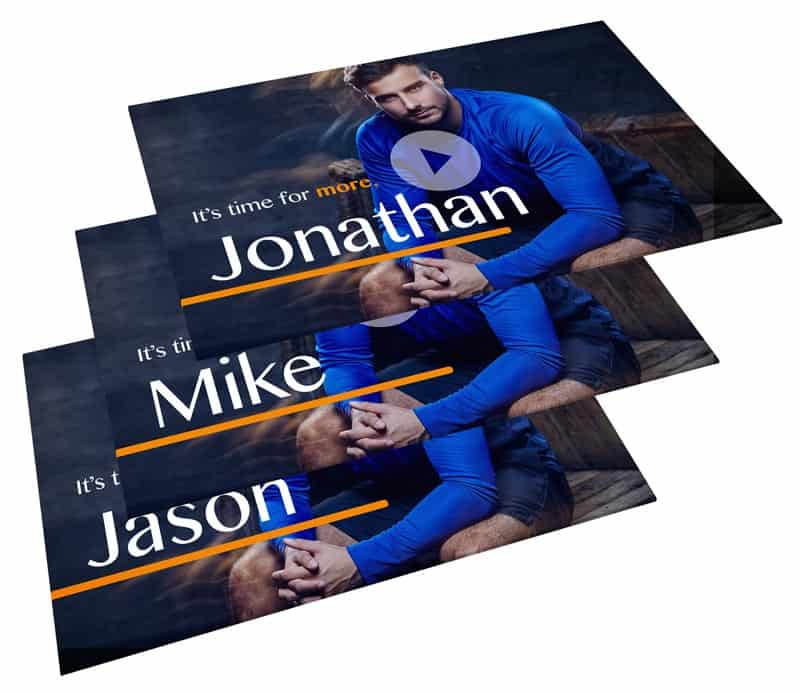
Starting the video with the name of the customer is effective
- Explain what the video is about. Ensure that they derive value from watching this, especially if it’s the only thing they will watch.
- Let the viewers know if there is any particular step they need to take next. You can also let them know that the rest of the video provides more information and guidance on what to do next.
Mr. Tell Me How
This viewer requires more information. Therefore, they’ll watch the main section of the video to learn more about how the video can help them.
In this section of the video, make sure to raise their interest and desire so that you can ask them to take a particular action.
Don’t wait until the end of the video to do this. The main section is the perfect moment to prompt users to act.
This action can be taken directly from the video clickable buttons if you use an interactive video player like Pirsonal Player.
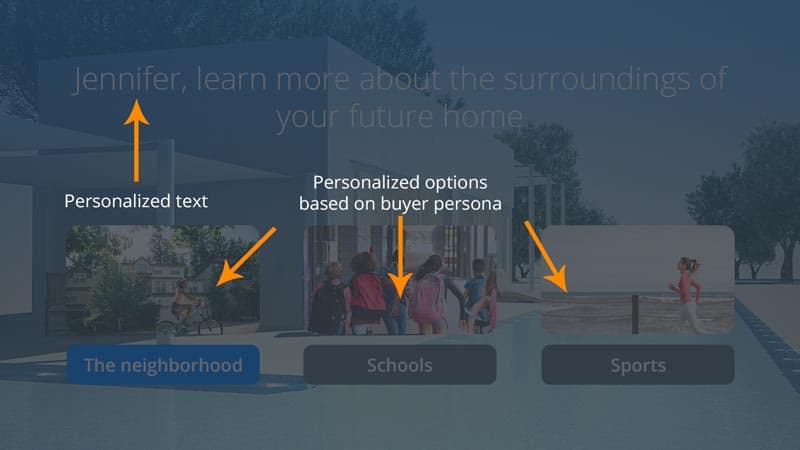
Interactive video with personalized in-video call-to-action
To learn more about how to strategically use video clickable buttons, read this article. It will help understand where to place them, the different types of video CTAs, and how to use personalization to increase video click-through rates.
Remember, with Pirsonal Player you can use personalization in the calls-to-action. These types of video CTAs are 200% more effective than the generic ones.
Top recommendations:
- Use personalization to provide value and raise their interest levels.
- Make sure to use clickable buttons to help viewers perform the specific action that aligns with your business goals. This can be done with an interactive video player like Pirsonal Player.
- Explain the relevant details associated with the action they need to perform. Use action-oriented CTAs.
Mr. Explorer
This type of viewer watches the complete video, from the intro until the outro.
They often like the video, find the content useful, and need more information.
However, it is important to avoid the mistake most video marketers make.
In this section of the video (outro), it is still important to raise the desire of the viewer to take the action you need viewers to take.
Once you’ve done this, reinforce the video CTA and show a clickable button so that they perform this action right away if they haven’t done this yet.
Top recommendations:
- Emphasize the main video message. If using personalization helps in doing this, use personalization to make this message more appealing and revealing.
- Reiterate in the CTA. Make sure it is clear and within the viewer’s context.
- Use an action-oriented CTA. Think about this as your last opportunity to engage with the viewer.
Now that you know the different video sections and audiences that consume each section, let’s dive into a copywriting framework you can use to successfully craft a video script that adapts to both each section of the video and the audiences that consume each of these sections.
Using the AIDA copywriting framework to create data-driven video scripts and storyboards
If you are wondering about an easy way to create video scripts and storyboards for data-driven videos, a good one is the AIDA framework.
The AIDA framework is a widely-used marketing and communication model that serves as a guide for creating effective messages, particularly in advertising and promotional content.
It’s designed to capture and maintain the attention of your audience, increase their interest, create a desire for your product, service or message, and ultimately prompt them to take action.
The framework is typically applied to various components of a communication piece, such as a video, to engage viewers effectively.
Here’s a breakdown of what AIDA stands for:
- A: Attention.
- I: Interest.
- D: Desire.
- A: Action.
In copywriting, you’ll usually follow this order in your copy.
However, my recommendation in personalized video marketing is a bit different.
To increase the effectiveness of personalized videos, combine the different components of this copywriting framework throughout the different sections of the videos.
Here is how.
Introduction section. Use “Attention” and “Interest”
- The Attention” stage corresponds to the introduction of your personalized videos.
- The goal is to grab the viewer’s attention quickly. Make them curious about what they are about to see.
- This is why I recommend starting the video with personalization since it grabs the viewer’s interest.
- You might achieve this through a compelling data-driven hook, an intriguing statistic, or a thought-provoking question related to the video’s topic.
- It is important to increase their interest in continuing watching the video for even more details.
- Take into account that about 20% of viewers won’t continue watching the video. This is why it is important to provide valuable information right from the beginning and to let them know that there is a call to action or next step.
- Do this once you have their attention and have raised their interest in what the video has to offer them.
Main section. Use “Interest”, “Desire”, and “Action”
- In the main part of the video, you’ll reinforce the “Interest”.
- This stage involves providing valuable information and context related to the personalized video message.
- In your video’s main content, you should focus on presenting the data, insights, or story in a way that keeps the viewer engaged and wanting to learn more.
- When you do this, you engage with about 70% of viewers.
- Use personalization to increase their “Desire” in relation to the call to action you are about to present to them.
- Highlight the relevance and benefits of the customer data you’re sharing to pique the viewer’s interest and help them to take “Action” right away.
Outro. Use “Desire” and “Action”
- The “Action” stage comes at the end of your video. Remember that, in most cases, only about 35% of viewers will watch until the end of the video.
- Therefore, don’t wait until the end of the video to present a call to action. Start doing this from the previous section.
- To help viewers take this next step, it is important to work in the “Desire” for taking this step.
- Encourage the viewer to take a specific action, such as visiting a website, completing an onboarding step, or making a purchase related to the video’s content and viewer’s context.
- Make the next step as clear and straightforward as possible using action-oriented language, so the viewer knows what to do next.
Incorporating the AIDA framework into your data-driven video script can help structure your content in a way that maximizes its effectiveness in engaging and persuading your audience.
In case you need a simple storyboard for video personalization, feel free to use the following one:
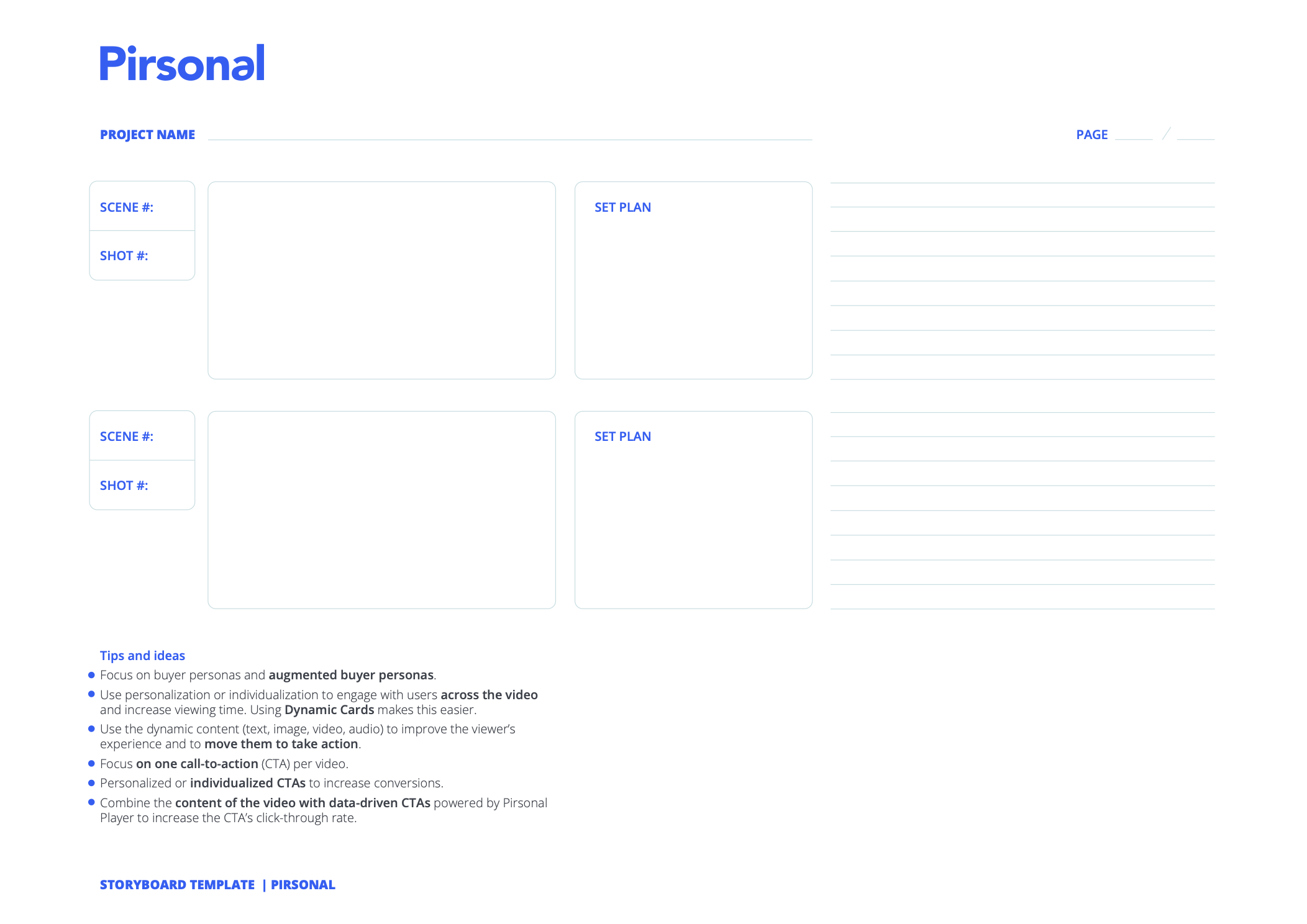
Free storyboard template for personalized videos
Improving the performance of existing personalized videos
If you are already using personalized videos to engage with customers and want to improve the performance of an existing program, modifying the content of the videos will often be your last step.
Follow these process instead:
Keep the following infographic as a visual reference as you iterate.
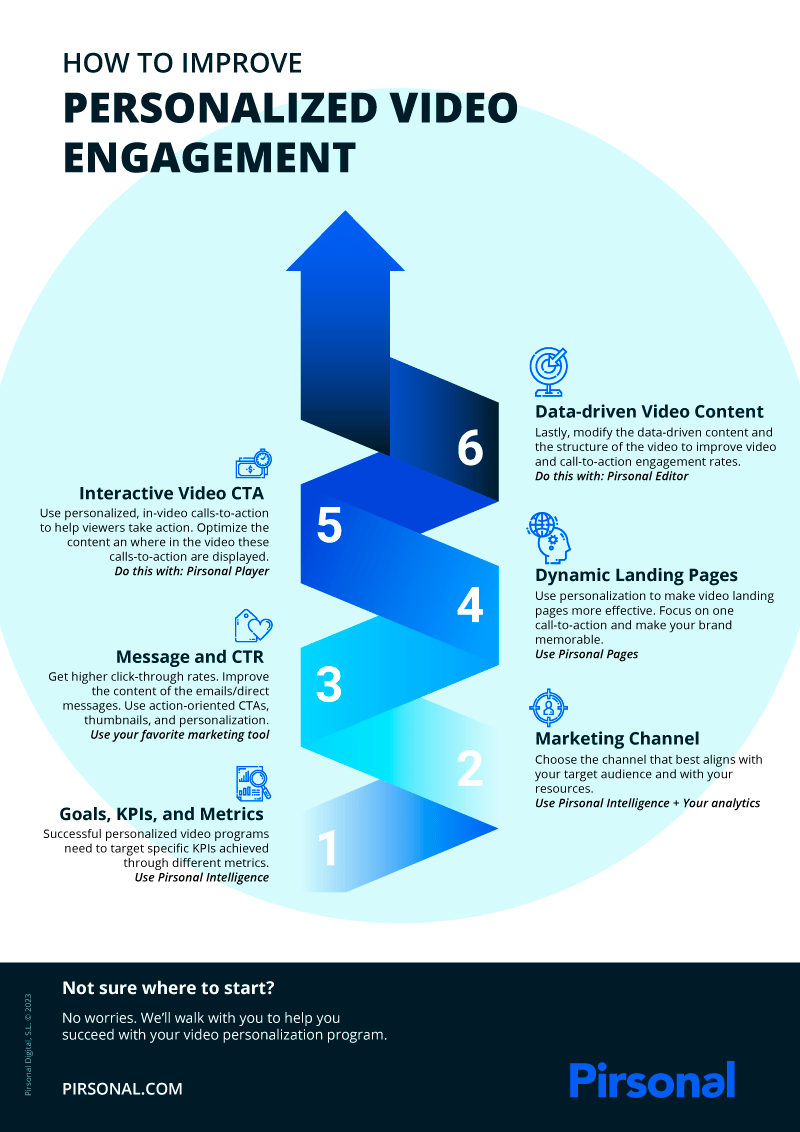
Follow these steps to improve the conversion rate of your personalized video marketing campaign
- Set or review goals, KPIs, and metrics.
- Optimize the marketing channel and content.
- Improve the landing page content. Use personalized landing pages to improve engagement.
- Improve the content and appearance of interactive CTAs.
- Then improve the data-driven video content.
Download these steps and share them with your team so that you can boost engagement with personalized videos in your marketing.
Need help with a personalized video project?
Most teams (and their agencies) don’t have experience crafting their first personalized video project.
Because of this, there is often a lot of uncertainty on how to successfully execute every aspect of the project to accomplish the set goals.
But this doesn’t have to be like this.
At Pirsonal, we provide a flexible personalized video platform that adapts to your team, audience size, and workflow.
But, most importantly, expert help so that your team succeeds at every stage of the video personalization project.
We do this in different ways based on your needs. A few popular ones are:
- Customer Success Plan to make sure your organization and ours are on track at every step. We identify and track anything that could put your video personalization project at risk and provide recommendations to help you overcome these challenges.
- Monthly, quarterly or yearly consulting sessions focused on your goals, KPIs, and metrics. Through these sessions, we constantly help you optimize the performance of your initiative and help you find new engagement opportunities with personalized videos throughout the customer journey.
- User platform training and onboarding. With this, all your platform users leverage our all-in-one platform based on their background, needs, and goals.
Curious to see how we can help you? Contact us now.
We’ll take the time to understand your goals, provide valuable feedback, share examples, and help you create an action plan for your upcoming video personalization project.
Final thoughts
As I often tell our Clients, there is no magic in video personalization.
Crafting videos that help your customers pay attention, engage, and act requires a solid strategy.
When conceptualizing the dynamic video content, make sure to create every section with the right audience in mind.
Use personalization to lead viewers to the next section and action.
Most importantly, make sure to use the customer data to add value to the viewer.
By following this personalized video framework, you can increase the chances of your data-driven videos achieving their intended goals, whether it’s to inform, persuade, or convert viewers into customers.
If you need assistance, remember: We’ll be happy to help. Chat with us now or use this web form to provide more information about your project.

